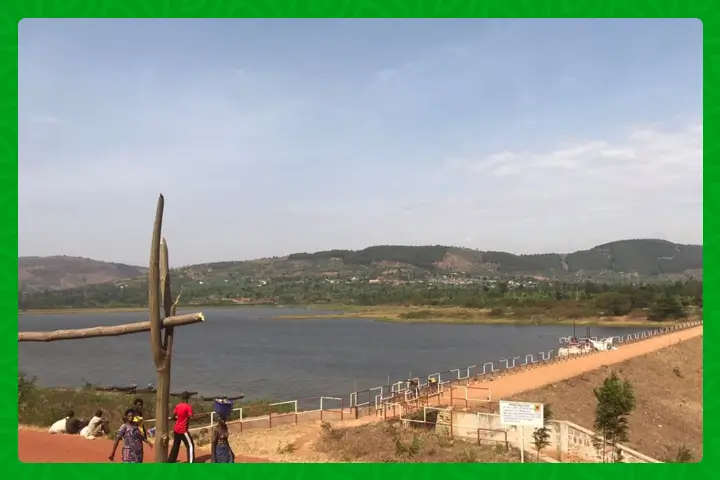
In the picturesque landscapes of Rwanda, where lush valleys cradle the promise of prosperity, a concerning reality has emerged. Out of the 77 valley dams scattered across the nation, a staggering 25% lie dormant, according to a report by the Rwanda Water Resources Board. These dams, designed to quench the thirst of livestock, particularly in the eastern reaches of the country, now stand idle, beckoning us to find a solution.
The Purpose of Valley Dams
Valley dams are more than just water reservoirs; they are lifelines for livestock. Nestled in the valleys, they serve as vital sources of water for cattle and other animals. The majority of these dams find their home in the drier districts of Rwanda’s Eastern Province, including Nyagatare, Gatsibo, and Kayonza.
Challenges Plaguing Our Valley Dams
However, the noble purpose of these dams is now at risk due to a multitude of challenges. Neglect and insufficient maintenance, invasive plants like papyrus and water hyacinth, overtopping, damage caused by cattle, and the unrelenting grasp of dry spells have rendered many of these dams non-functional.
The Call for Rehabilitation and Training
The water storage status report for 2022/23 has sounded the alarm, calling for the rehabilitation and training of users for proper maintenance of these crucial water sources. It is clear that these valley dams must be rejuvenated, properly managed, and rehabilitated to serve their intended purpose.
Regional Disparities and Opportunities
When we look at the distribution of these valley dams, we find a high concentration in Nyagatare District, with 42, followed by Kayonza with 28, and a lower number in Gatsibo, totaling 12. While 20 valley dams are currently non-operational, the report reveals that 49 are still functional. Unfortunately, the coordinates for the remaining 8 were not located during the assessment.
The Need for Immediate Action
The Rwanda Water Resources Board also emphasizes that some of the operational dams are in need of prompt maintenance. The situation is pressing, and action cannot wait.
Innovative Solutions for Livestock Water Supply
Stephen Sebudandi, President of Kayonza Dairy Farmers cooperatives, highlights the need to explore innovative solutions. He suggests the use of boreholes and solar power to pump water, creating more dams to supply water to livestock. In his view, these technologies offer sustainable solutions to extract water for livestock, reducing the need for costly water transportation.
Government Initiatives: Zero-Grazing and Increased Milk Production
The Ministry of Agriculture and Animal Resources is already taking steps to enhance livestock farming. They have mandated that 70% of pastureland in select districts be cultivated with crops that provide cow fodder, while the remaining 30% is reserved for cow sheds. This initiative is part of a broader plan to enforce the zero-grazing system and boost milk production.
The Path Forward
As we seek answers to the challenge of idle valley dams, it’s imperative that we work collaboratively to breathe life back into these vital resources. While natural storage, like lakes, dominates Rwanda’s water resources, the potential of artificial storage in the form of valley dams cannot be overlooked.
By restoring and effectively managing these reservoirs, we can secure a prosperous future for livestock farmers and ensure the sustainability of Rwanda’s agricultural sector.
At the time of writing, the Rwanda Agriculture and Animal Resources Board had not responded to queries regarding the future of these dormant valley dams. Their revival holds the promise of a brighter, more resilient agricultural landscape.
Stay updated with the latest farming tips and agriculture industry news from Africa by subscribing to our newsletter. Don’t miss out on valuable insights and updates. Follow us on Twitter, LinkedIn, and Facebook to join our farming community and stay connected with us.



















